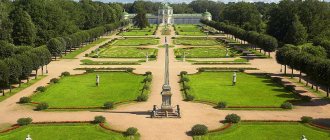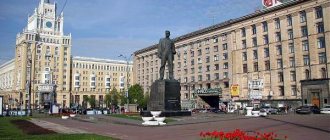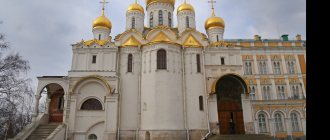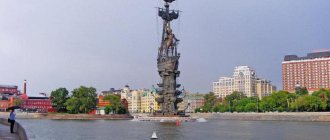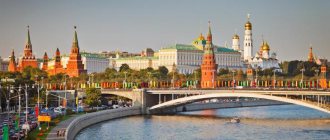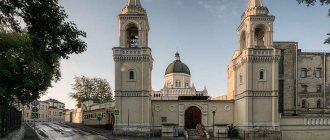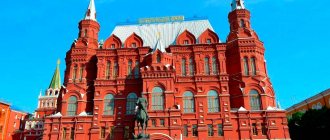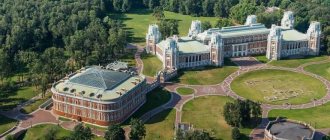Novodevichy Convent
Video: Novodevichy Convent
Basic moments
Domes of the Smolensk Cathedral
The museum part of the Novodevichy Convent tells in detail about its history, famous personalities whose destinies at different times were connected with this place, and there is an excursion department. There are also daily services held here, which anyone can attend. In addition to visiting individual attractions, it is simply pleasant to take leisurely, contemplative walks through the shady territory of Novodevichy.
View of the Novodevichy Convent
There are several versions of the origin of the name of the monastery. The first says that the shrine got its name because of the place where it was built - the Maiden Field. According to legend, it was here that the most beautiful girls were chosen and sent as tribute to the Khan of the Golden Horde. The second version claims that the name comes from the surname of the first abbess - Elena Devochkina. The third is the most realistic and is most often used by historians. According to her, the monastery from the very beginning was created for women, that is, it was for girls. The prefix began to be used in order to distinguish the shrine from a similar one opened earlier in the Kremlin.
History of the Novodevichy Convent
Construction of the Novodevichy Convent.
Miniature of the Front Chronicle. Second half of the 16th century. In the 16th century, on Samsonov Meadow, which was also called the Maiden Field, Vasily III founded a monastery. When the Moscow prince set out to reconquer Smolensk occupied by the Lithuanians, he vowed that in case of victory he would build a shrine. Almost 10 years after the city was finally taken, Vasily III kept his promise. The place was not chosen by chance, because it was from Samson’s Meadow that the miraculous icon of Hodegetria was sent from the capital to recaptured Smolensk.
Princess Sofya Alekseevna in the Novodevichy Convent (1879), painting by Ilya Repin
Initially, the majestic complex of buildings, as well as the walls of its territory, were made of wood. Soon after the completion of construction, the first prisoner of royal blood appeared here, of which there would later be many. Vasily III was able to obtain a divorce from Princess Saburova, who, over the course of many years of marriage, was unable to give birth to an heir. The first wife of the Moscow prince was exiled to Novodevichy and lived within its walls until the end of her life.
After Boris Godunov came to power, most of the buildings were replaced with stone ones, modeled after the Kremlin monastery. But even the massive battlements could not prevent the terrible destruction that befell the shrine during the Time of Troubles. Then the monastery was turned into a fortress, it changed hands several times, and then was completely set on fire.
Panorama of the Novodevichy Convent
A new stage begins for the Novodevichy Convent with the coming to power of the Romanovs. During this period, land and jewelry are donated to the shrine. The monastery itself is highly respected in the royal family. Sofya Alekseevna, who came to power, made a huge contribution to the development of the shrine. Thanks to her, almost all the buildings were remodeled in the capital's Baroque style, and several new residential and religious buildings also appeared.
Bogoroditskaya Tower
St. Ambrose Church with the refectory and chambers of Irina Godunova, XVI-XVII centuries.
In 1689, the royal philanthropist became a prisoner within the walls of her beloved monastery; Peter I imprisoned her here. By the way, his first wife was also forced to end her life in this monastery. However, she ended up here by the grace of Peter II. However, this place was not only a prison; women from noble Russian dynasties often went here, voluntarily devoting themselves to serving God, donating their jewelry and other wealth when taking tonsure.
It was with difficulty that Novodevichy was saved after the retreat of Napoleon's troops, who were planning to blow up the shrine. After the October Revolution, the “Museum of Women’s Emancipation” was opened here. During the Soviet years, the monastery was not used for worship and was only returned to the church at the end of the 20th century.
Scheme of the Novodevichy Convent
Architecture of the shrine
Smolensk Cathedral, 1524-1525.
Several churches of the monastery are built in such a way that they form an Orthodox cross facing east. The central place in the ensemble is occupied by the Smolensk Cathedral. It is here that the oldest copy of the Iveron Mother of God icon is contained, which is considered the main and most revered relic of the Novodevichy Convent. The large five-domed cathedral has preserved unique frescoes from the 16th century and an iconostasis from the 17th century, which every visitor can admire today. The architectural ensemble mixed Moscow Baroque and the later style of the Middle Ages. This appearance took shape in the first centuries of the monastery’s existence and has hardly changed since then. Despite this combination, the temple composition looks very harmonious. The white and purple buildings of the monastery stand out beautifully against the background of the dense greenery growing on the territory of the shrine.
Bell tower, 1689-1690.
Church of the Assumption of the Blessed Virgin Mary with a refectory, 1685-1687.
It is believed that the main architect who participated in the creation of most of the buildings was the famous Moscow architect of that time, Pyotr Potapov. At least, it is his name that appears in the construction documents.
The monastery houses the second tallest Moscow bell tower after the Kremlin’s Ivan the Great. Its six levels rise to a height of 72 meters. The alternation of openwork and solid tiers looks very picturesque.
Mariinsky Chambers
Some rooms and buildings of the monastery are closed to the public for various reasons, but the most artistically valuable buildings are still available for inspection. At the Novodevichy Convent there is a cemetery of the same name, which became the final resting place of many famous figures of art, culture, and politics.
Novodevichy Cemetery
Burials near the southern wall
How to get there
Address: Novodevichy proezd, building 1. You can get to the monastery by metro. You need to get off at Sportivnaya station, from where you can easily walk: along Savelyeva Street, then through the park and along Uchebnoye Lane. You can also get there by buses 64 or 132, trolleybuses number 5 and 15.
Opposite the Novodeviy Monastery there is a monument “Give way to ducklings”
Sunday service
Opening hours, visiting procedures
Every day, except Tuesday, from 10.00 to 17.00 you can visit the Novodevichy Convent. The tour desk is open until 16.45. Entrance for excursion and pilgrimage groups, as well as foreign visitors, is paid: 300 rubles for adults, 100 and 50 for children and preferential categories, respectively. There is an additional charge for group services - 1000 rubles. Admission for self-guided tours is free. A separate program offers visitors a tour of the Novodevichy necropolis. You can order tickets and get information by phone.
Novodevichy Convent in winter
History of the Novodevichy Convent in Moscow
This place was located at the crossroads of city routes: the Smolensk land road from the east and the waterway along the Moscow River from the west. Surrounded by high impregnable walls, the monastery was intended to become not only a House of Prayer, but also a fortress on the way to Moscow.
The foundation of the monastery took place by decree of Prince Vasily III - in honor of the capture of Smolensk in the war with the Lithuanians. The Grand Duke also ordered the main cathedral church to be consecrated in honor of the miraculous Smolensk Icon of the Mother of God “Hodegetria”.
The Icon of the Mother of God “Guide” (in Greek “Hodegetria”), according to legend, was painted by Saint Luke the Evangelist and was first located in Jerusalem. Then she was transferred to Constantinople (Constantinople, the capital of the Byzantine Empire), where emperors very often took her with them on campaigns against their enemies and won victories with her. In the 11th century, the Byzantine Emperor Constantine Monomakh blessed his daughter Anna with a copy of it, marrying her off to Prince Vsevolod of Chernigov. In the 12th century, Vsevolod’s son Vladimir Monomakh moved this icon from Chernigov to Smolensk, after which the icon received the name Smolensk.
In the 14th century, “Hodegetria” was moved to Moscow. But in the 15th century, the residents of Smolensk, under Polish rule, asked to return the icon to their city. The icon was escorted from Moscow to Smolensk solemnly, with a religious procession. A farewell prayer service was held at Devichye Pole.
The monastery received the name “Most Pure Hodegetria of the New Maiden”, or Novodevichy, in contrast to the old nunnery that existed in the Kremlin since the end of the 14th century. The name of the monastery is also derived from the surname of the first abbess, schema-nun Elena Devochkina. There was a second name for the monastery - Bogoroditse-Smolensky.
Initially, the walls and towers of the monastery were wooden. There were only southern gates; the northern gate was built later.
By the 17th century, the territory of the Novodevichy Convent was surrounded by brick walls with 12 towers. They were made on the model of the Kremlin ones; The corner towers are round, the walls are square. Their tops were decorated with teeth.
Loopholes were made in the walls - openings for shooting. The monastery walls were decorated with stone carvings.
Most of the existing buildings of the monastery date back to the second half of the 17th century and are an excellent example of the Moscow Baroque style.
The main cathedral of the monastery, named in honor of the Smolensk Icon of the Mother of God, was erected in 1524-1525 and completed for the patronal feast of August 10 (July 28, old style). The day of the consecration of the cathedral is considered the date of the founding of the Novodevichy Convent. The cathedral church of the monastery was built on the model of the Assumption Cathedral of the Kremlin.
In 1525, a new copy of the Smolensk Icon of the Mother of God from the Kremlin image, located in the Annunciation Cathedral, was transferred to the temple.
The painting of the walls of the cathedral dates back to 1526-1538, the vaults - to the time of the reign of Boris Godunov. In the 17th and 18th centuries, the frescoes of the Smolensk Cathedral were repeatedly updated.
The Church of the Transfiguration of the Lord was erected above the main entrance to the monastery in 1683-1685. At the same time, a six-tier bell tower 73 meters high was built. Also at the end of the 17th century, the Church of the Intercession of the Blessed Virgin Mary was erected above the southern gate of the monastery. To the southwest of the Smolensk Cathedral in 1685-1687, an ancient refectory with the Church of the Assumption was rebuilt.
The Assumption Refectory Church was rebuilt at the beginning of the 19th century: the open gallery, which originally surrounded the entire temple, was dismantled, covered extensions with stairs were made, the five-domed structure was replaced by one dome.
The main buildings (cathedral, bell tower, refectory) are placed in one line and form a panorama that opens wide at the entrance to the monastery. A small area in front of the cathedral is flanked by auxiliary buildings.
The Novodevichy Convent was the richest monastery in Moscow, enjoyed the patronage of the Russian tsars and owned vast lands.
Located in a bend of the Moscow River at three crossings (at Dorogomilov, Crimean Ford and Vorobyovy Gory), the monastery played a defensive role, protecting Moscow from the southwest: when in 1591 the horde of the Crimean Khan Kazy-Girey approached Moscow, detachments of archers stationed in monastery, managed to prevent the enemy from crossing the river. But the nuns of the monastery themselves once had to resist the enemy. This happened in 1812, when Napoleon, retreating from Moscow, tried to blow up the monastery buildings. Then the nuns defused the planted charges.
In the 16th-17th centuries, the monastery was the place where representatives of the royal dynasty, as well as the richest boyar and noble families of that time, were tonsured as nuns, and these women then received the right to be buried on the territory of the monastery.
In the Novodevichy Convent, the first Russian “autocratic” Tsarina Irina Godunova, Princess Sophia, took monastic vows (after an unsuccessful plot against Peter I); The first wife of Peter I, Evdokia Lopukhina, spent the last years of her life in the Novodevichy Convent. The tombs of Sophia and Evdokia have been preserved and are located in the Smolensk Cathedral of the monastery.
The necropolis that arose in the monastery in the 16th century subsequently expanded significantly, and prominent statesmen, war heroes, scientists, writers, etc. were also buried here.
The poet Denis Davydov, the historian Sergei Solovyov, the writers Ivan Lazhechnikov and Mikhail Zagoskin, and General Alexei Brusilov are buried on the territory of the Novodevichy Convent. Many participants in the Patriotic War of 1812 were also buried here. Directly adjacent to the Novodevichy Convent is the walled Novodevichy Cemetery, where famous cultural and political figures are buried.
After the October Revolution, the Novodevichy Convent was abolished, but in 1922 it was declared a museum, which allowed the unique architectural ensemble of the monastery to remain almost untouched. Since 1934, the Novodevichy Convent has been a branch of the State Historical Museum. The museum has a number of exhibitions and thematic excursions.
In 1944, the Orthodox Theological Institute and pastoral theological courses began operating within the walls of the Novodevichy Convent, later transferred to the Trinity-Sergius Lavra as the Moscow Theological Academy and Seminary.
In 1945, the Assumption Cathedral was returned to the church. Since 1964, the department of Metropolitan of Krutitsky and Kolomna has been located at the Assumption Church.
Monastic life on the territory of the Novodevichy Convent resumed in 1994, and since 1995, services on patronal holidays have been held in the Smolensk Cathedral.
In the Novodevichy Convent, the Smolensky Cathedral and many buildings are under the jurisdiction of the museum, and the convent is under the jurisdiction of Metropolitan Krutitsky and Kolomna. The Moscow Regional Diocesan Administration is located in the monastery. The architectural ensemble of the Novodevichy Convent has survived to this day almost unchanged. The ensemble is distinguished by its integrity and authenticity: it has not undergone reconstruction or reconstructive intervention, there are no recreated objects here, only restoration and conservation work is being carried out. In addition, the ensemble has exceptional town-planning significance: it was and still is an important town-planning dominant feature of the entire southwestern region of Moscow.
Current protection statuses of the monastery ensemble: a particularly valuable object of cultural heritage of the peoples of the Russian Federation (since 1991) and an architectural monument of federal significance (since 1995).
In 2004, when the Novodevichy Convent turned 480 years old, its architectural ensemble was included in the UNESCO List of Cultural and Natural Heritage.
